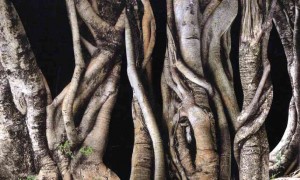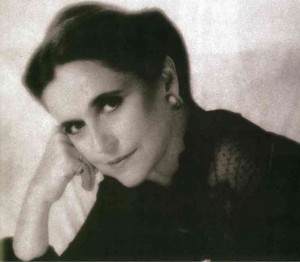
A big, richly illustrated tome is “XYZ: The Creativity of Jaime Zobel” (JZA Artworks, 2012, 204 pages), a compilation of images mostly culled from Zobel’s photography books “Filipino Portraits,” “Glory and Gold,” “Homage,” “Island,” “Silence,” “Journeys with Light.”
It is a hefty volume with ultra-high-definition photo reproductions, the gnomic text counterpoised by sumptuous visuals. In the introduction, the photographer says he has selected the images for this book himself, often at random, but always to illustrate his methods and aesthetics.
One of the country’s top business tycoons and chairman emeritus of Ayala Corporation, Jaime Zobel de Ayala has taken photography as his medium for artistic expression.

“I have always used a simple camera,” he says. “This way I can command the camera without it having to command me. The idea is to photograph my moods.”
Through these images then, he expects the viewer to share his moods.
He is particularly attracted to Japanese aesthetics. “Because there’s order but there’s always an element of gentle surprise. A line is drawn but it is not quite at the center, because at the center it would be so terribly boring.”
When doing portraiture—“There has to be something that strikes me. In a face, it’s always the eyes.” Those are eyes, indeed, that dominate his portraits of Baby Fores, Beatriz Zobel, Victor Ochoa, Ang Kiu Kok.
The architectonic also predominates not only many of his themes but also his visual composition. “There’s a part of my mind that concerns itself with the underlying structure and the relative space of things.”
Hieratic symbol
Zobel has gone beyond simple framing, lighting, composition and coloration. Unexpected of someone with such sedate public persona, he can be as experimental as any young avant-gardist wannabe.
In his photography he has incorporated collage and montage, graffiti art, violent juxtapositions, and a colorism that fluctuates between bold chromatics and muted monochrome. The look ranges from Hallmark slickness to the rough texturing of Sebastião Salgado to the amorphous forms of Stan Brakhage.
His image of lotus blooms and pads, purple and pink set against green and yellow, looks transcendent, way above its calendarismo origins. A luminous profile of a calla lily is evocative of that hieratic symbol of the decadentes: the gilded lily.
Zobel finds unusual patterns in banal things such as grains of sand, conch spiral, shredded paper, parcel wrappers, rusty door jamb, crack on wall, trifling leaves and petals. These he turns into images of extraordinary richness that often look enigmatic, if not surreal.
“We live in an environment where we are continually processing,” he says. “Our being is made up of different moments. I believe that it takes both our conscious and unconscious selves to gather these impressions into compositions—final images that become more meaningful.”
Personal statement
That’s why a favorite method is collaging his cutup photos. Eschewing technology, he does it by hand, clipping and pasting the pieces.
“In this manner, I let my unconscious work harder,” he explains. “Something unsaid reveals itself in the process.”
In this he is obviously a compositor, a visual composer, if you may. He has even been described as a “master craftsman,” as if photography were an artisanal preoccupation. But—“It’s not easy to compose. It’s a mixture of discipline and inspiration.”
In one work, cutup pieces of color paper he has pasted together create a Mondrian grid of blue, black and red. In works such as this, Zobel emerges as an accomplished collage artist, not necessarily as a photographer.
Collage—a popular hobby of children adapted by the Cubists, Futurists, Dadaists and Surrealists—is a more personal statement of an artist. And Zobel is right in saying that, through arrangement of shapes and colors and free association, it is the stream of his consciousness.
He has been an art photographer for almost 40 years. He is the first Filipino amateur photographer to receive a licentiate from the Royal Photographic Society. The French and Spanish governments have commended him for his “contributions to art and culture.”
At 77, he says his trajectory is still “to continue learning and studying photography.”
This latest volume from Zobel is outstanding in that it doesn’t fail to exalt the spirit from page to page. Susan Sontag’s “On Photography” is a beautiful book, but it doesn’t have pictures.

